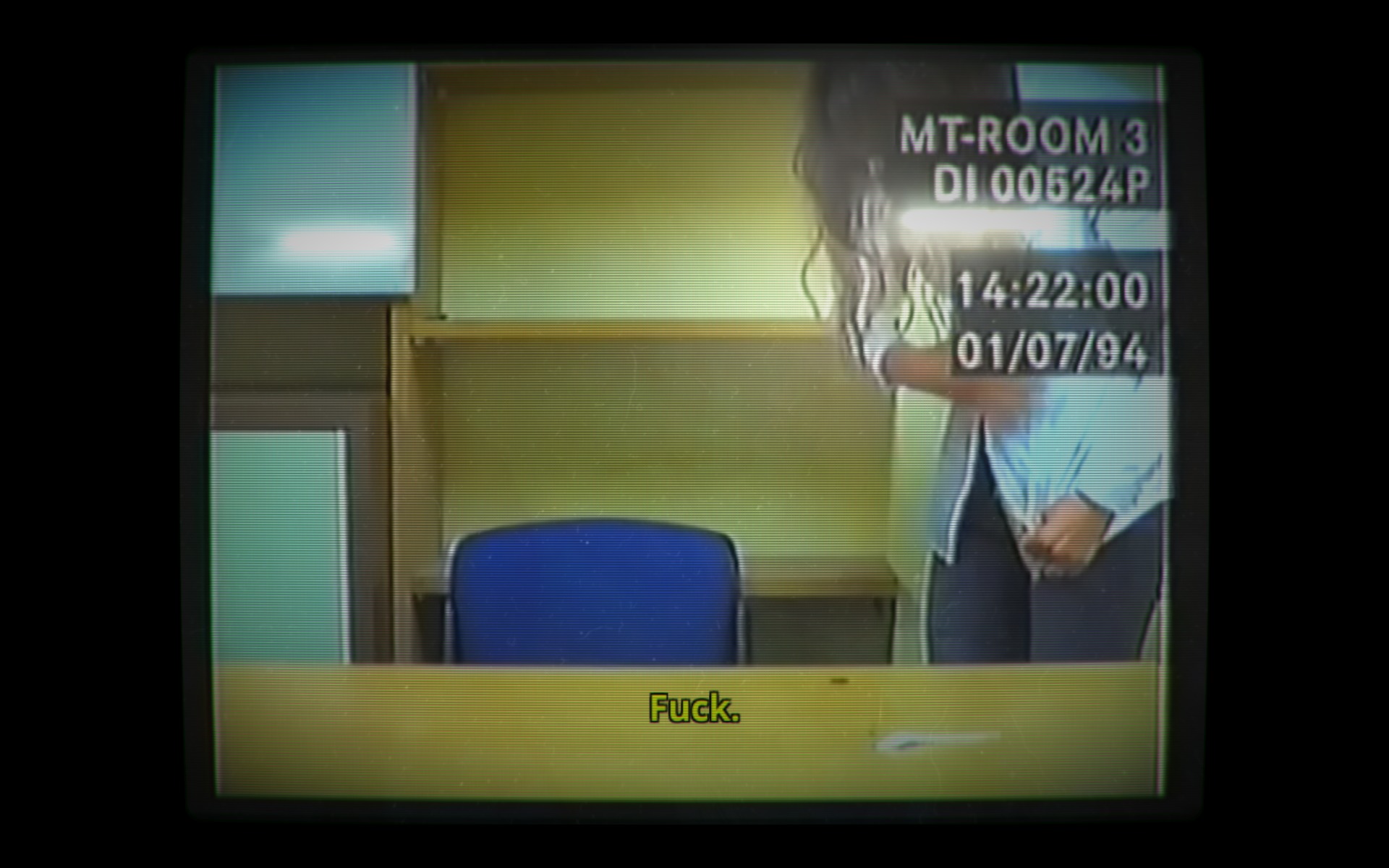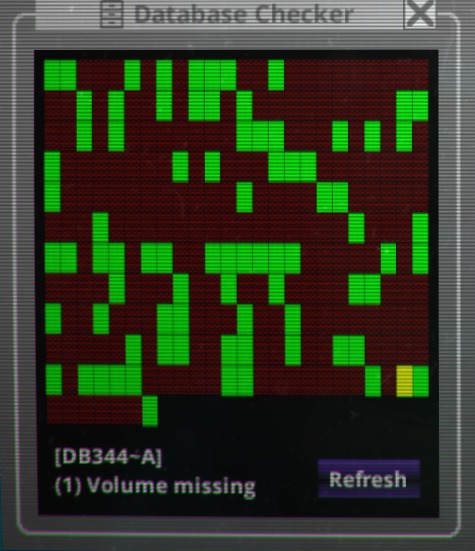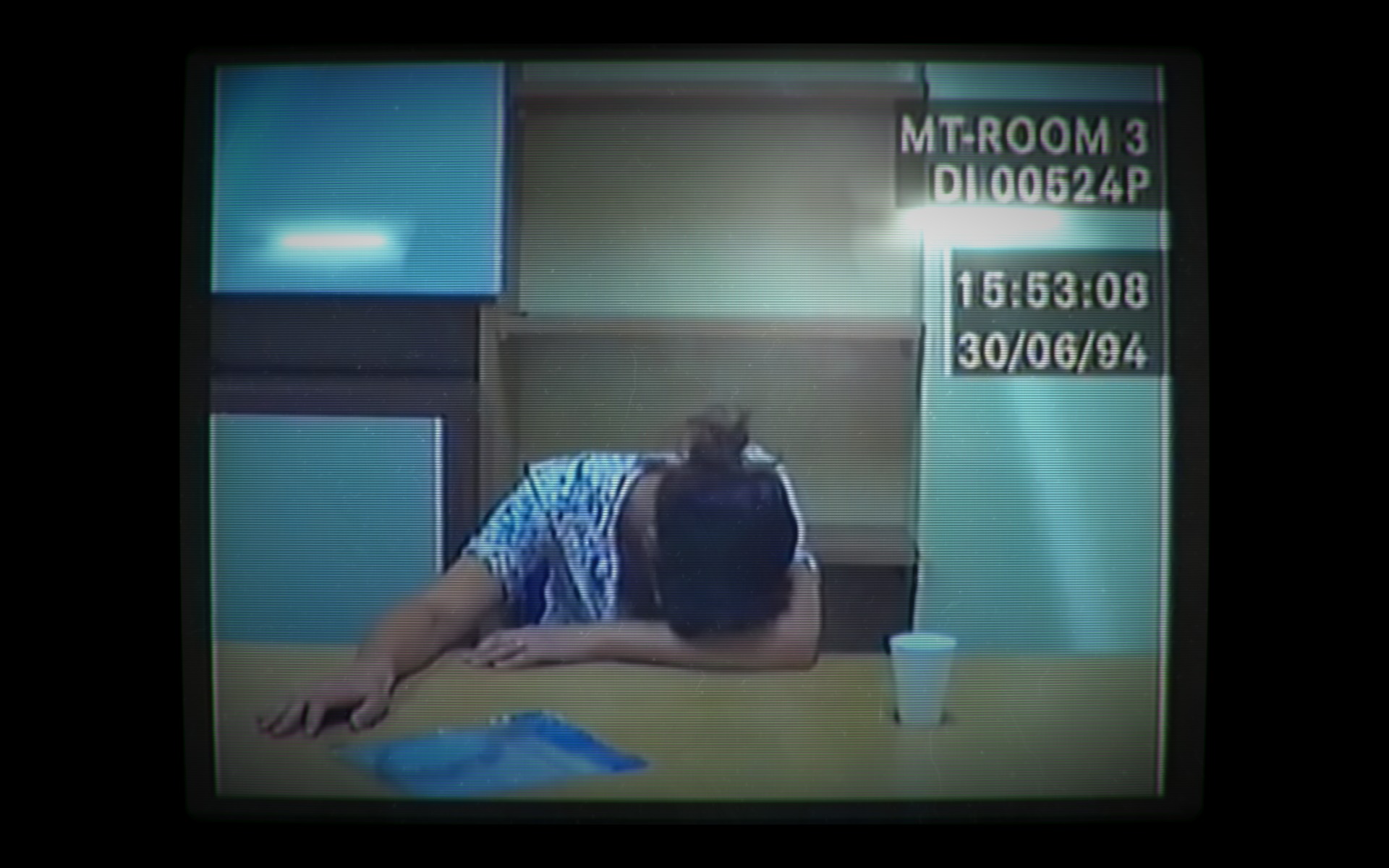
I played Her Story perched in front of the PC on a stool next to my other half, firing theories and keyword ideas at each other, and at one point re-watching the same clip maybe 20 times in order to decipher a sequence of taps. (Seifert also drums in a band, which helped with that scene.) By the end I felt like we’d come close to understanding all but a few fine details of the case, so I was surprised to venture into a forum and find several significantly divergent theories. Without outright demanding an answer, I ask Barlow if Her Story is deliberately designed to support multiple interpretations, or whether there is a single correct solution.

The database tracks which of the clips you still need to collect.
“Yeah, someone else just tried to get me to settle their office argument,” he replies, laughing. “There’s a very definitive idea I have on paper of what happened … But I think what’s interesting is allowing people to see that little bit of the iceberg that’s above the water, and kind of guess, or fill in with their imagination, exactly what’s underneath.” Questions linger though. Like what that musical instrument is doing in the interrogation room? Just an item from the crime scene, Barlow tells me. He also says to stop looking for the volume marked missing in the database. It’s nothing to worry about, and more an indication of the database being incomplete because the officers’ questions aren’t included.
Of all the design decisions, leaving out the cops arguably has the most impact. Their absence means that the player is positioned as the one experiencing the woman’s testimony firsthand. And if you consume all the clips in a single sitting, it soon starts to feel intensely personal and at times uncomfortable. Towards the end you feel exhausted, like you really have been locked in a room with her, but crucially the experience doesn’t feel voyeuristic in the way that the old FMV games often were.
“That’s been really rewarding to hear,” says Barlow, “because I think that’s the journey I took on it. I was watching all these police interviews and I really found my position shifting to empathize with the people being interviewed. Because whether they had or hadn’t committed heinous crimes, it was this double betrayal where you have the homicide detective pretending to be the best friend, and these police interviews often function almost like psychiatric interviews where you have people who’ve had very troubled lives, and they want to talk and they want to tell all their secrets.”

Barlow says that watching those interviews on YouTube, he felt like he was party to something he shouldn’t be, and that was the crucial shift in perspective he wanted to do something with. “I think the structure of the game—getting rid of the detective’s voice and making the central mechanic using the woman’s words to actually explore her story—in some way gives the power of the story back to the woman who’s being interviewed. And, like you say, it doesn’t then feel quite as sleazy and voyeuristic. It’s much more about empathising. You’re more on her side of the table, just letting her tell her story.”
"...the cliché is: ‘Why isn’t this a movie? Why don’t you just upload it onto YouTube?”
Perhaps inevitably given Her Story’s innovative structure and reliance on video, some have felt compelled to attack it online for lacking interactivity. Barlow admits he’s had to do some pruning of the Steam forums, and says: “It’s kind of frustrating, because a lot of these people haven’t necessarily played the game. So they’re just sort of see that it’s unconventional, and the cliché is: ‘Why isn’t this a movie? Why don’t you just upload it onto YouTube?”
Gone Home continues to draw similar sorts of criticism, so Barlow is in good company there, but he rightly refutes the idea that players don’t interact with Her Story. “The annoying thing is that what’s interesting about this game is the density of interaction you have. The clips are quite short, so you’re not just sat there for five minutes watching one clip ... The freedom you have to type stuff, and what it asks of your brain, is quite engaging. It’s asking you to infer context, place things together, and see these disparate elements. You’re having to riff on it, associate words, think about things, listen to stuff, put together in your head how this story works, and empathise with this character.”
The biggest gaming news, reviews and hardware deals
Keep up to date with the most important stories and the best deals, as picked by the PC Gamer team.
Future crimes
As for why some people seem so determined to attack any game that falls outside conventional genre boundaries, Barlow says: “I think it’s a vocal minority of people that are worried that their games are being taken away from them. I was number two on Steam at one point, so I almost, almost took their Counter-Strike and ended the world as we know and destroyed all their games forever, but order was restored in the coming days.”
Nonetheless, the world for Barlow and Seifert has surely changed. In terms of what comes next, he’s going to let a few more ideas bubble away first. (Judging by this tweet from yesterday, he already has a strong follow-up in mind.) Barlow tells me he has other ideas involving video, but wouldn’t want to get pigeonholed as just Mr. Video, despite how good that might look on a business card. “It’s a character from a David Cronenberg movie or something, isn't it?” He also says people need to see more of Seifert on-screen. I ask her if she sees herself doing more games, or maybe movies? “Oh, I don’t know,” she says. “I’m lucky that this was such a cool project. It was different, visionary, and I got to do it.”
Her Story is out now on Steam.
With over two decades covering videogames, Tim has been there from the beginning. In his case, that meant playing Elite in 'co-op' on a BBC Micro (one player uses the movement keys, the other shoots) until his parents finally caved and bought an Amstrad CPC 6128. These days, when not steering the good ship PC Gamer, Tim spends his time complaining that all Priest mains in Hearthstone are degenerates and raiding in Destiny 2. He's almost certainly doing one of these right now.


